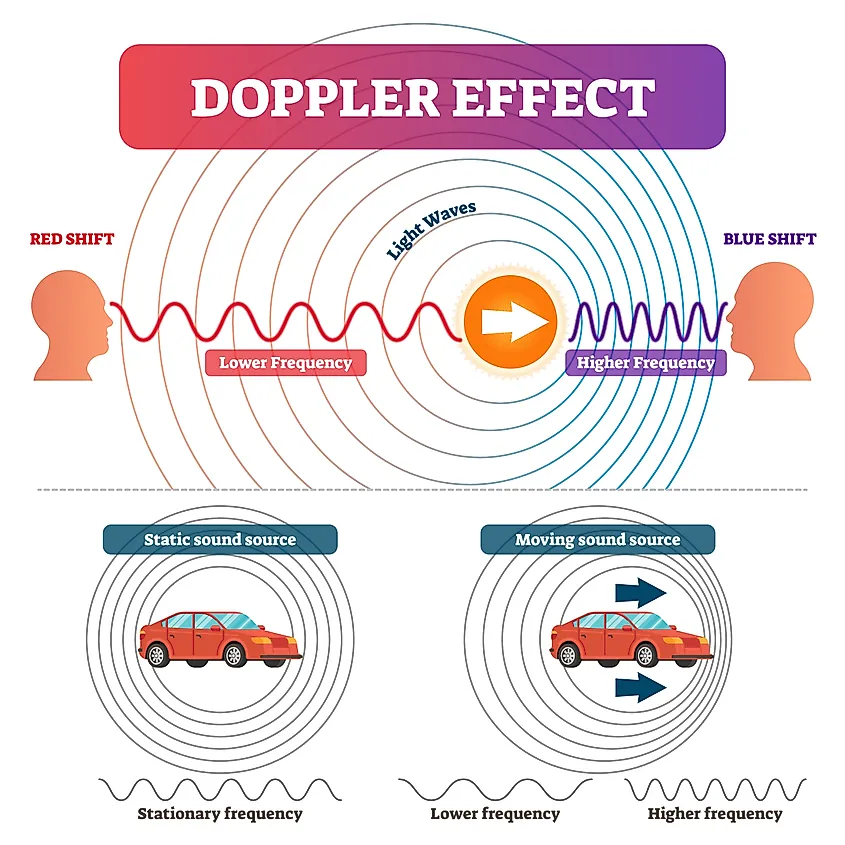
What Is The Doppler Effect?
The Doppler Effect describes how the frequency of a wave changes depending on the motion of an object relative to your position. The Doppler Effect will apply to any wave, including both sound waves and electromagnetic waves. One of the best ways to visualize the Doppler Effect is to imagine a police car with its sirens on speeding past you. As the police car gets closer, the pitch of its siren increases. When it passes you and begins speeding away, the pitch of its siren decreases. This is because as the police car approaches you, its speed and motion are compressing the sound waves in front of, and when it starts speeding away, its sound waves are being stretched. By compressing sound waves, the distance between crests is decreasing, and thus the frequency of the waves are increasing, in turn causing an increase in pitch. When sound waves are stretched, the distance between wave crests is increasing, and both frequency and pitch decrease as a result.
Doppler Effect and Electromagnetic Radiation

The Doppler Effect is most easily visualized by its effect on sound waves, yet the exact same principle always applies to light waves. Light itself is a wave, and so the Doppler Effect also applies to waves of light. However, the Doppler shift of light can only really be seen when an object is moving at extreme velocities at or near the speed of light. Although sensitive equipment can observe a Doppler shift at much lower velocities, our eyes simply cannot see it.
Imagine that same police car from the previous example. Rather than focusing on the siren, we will now focus on the car itself. Let’s assume that the police car is moving at 99% the speed of light. Now as it speeds towards you, light waves are being compressed and blue-shifted. When it passes you and starts speeding away, light waves are stretched and red-shifted. As was the case with sound waves, light that is blue-shifted has a higher frequency, while light that is red-shifted has a lower frequency. Interestingly, with electromagnetic radiation, this also translates to the light’s energy, as higher frequency light is more energetic than lower frequency light.
Use in Astronomy

Since the Doppler Effect influences light waves, it has profound applications for the science of astronomy. The Doppler shift of light is dependent upon an object’s velocity relative to us, and so it can be used to calculate how fast an object is moving in space. The Doppler Effect has been used to calculate how fast other planets rotate, how fast stars move, and the rate at which the universe is expanding. The Doppler Effect has also been used in discovering planets around other stars by measuring the Doppler shift of a star caused by the gravitational pull of an orbiting planet.











